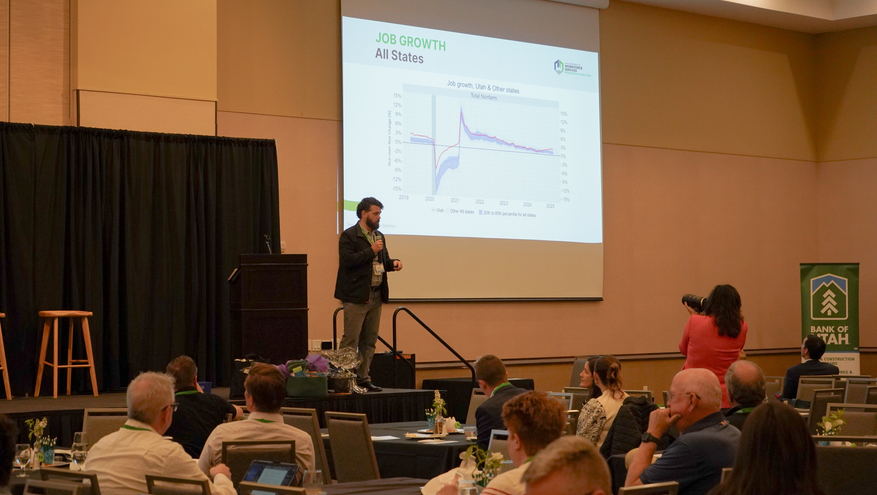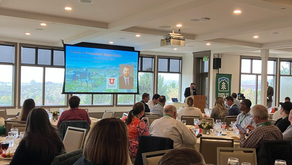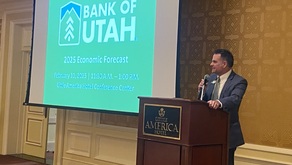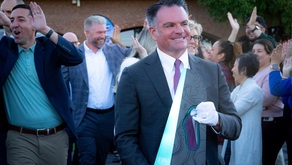Cache County’s economy remains fundamentally strong, but local leaders say signs of slowing growth and rising challenges, particularly in housing and labor, warrant close attention. These insights were shared at the 2025 Cache County Economic Summit, co-hosted by Bank of Utah and the Cache Valley Chamber of Commerce at the Riverwoods Conference Center.
The summit featured the annual Economic Forecast delivered by Michael Jeanfreau, Senior Economist with the Utah Department of Workforce Services, who provided a comprehensive overview of both Utah's and Cache County’s economic outlook.
Economic Outlook: Strength and Strain
Jeanfreau noted that Utah continues to be one of the fastest-growing economies in the nation, and Cache County maintains a low unemployment rate of 2.7 percent, with government and manufacturing sectors leading local employment. However, despite the region’s traditional resilience during national downturns, Jeanfreau pointed to growing pressure from a tightening labor market, rising housing costs and slower wage growth, particularly for younger and lower-income households.
Although Cache County’s population is still growing, Jeanfreau noted that labor force growth is not keeping pace, and outlined several contributing factors:
- Many working-age residents aren’t part of the labor force, largely due to the county’s significant college student population. Many students don’t work while in school.
- Most college graduates leave the area after graduation to pursue career-level jobs elsewhere, due to a shortage of those opportunities locally.
- Fertility rates are declining in both Cache County and across Utah, contributing to a gradual slowing of population growth and potentially affecting future labor force expansion.
Housing Affordability in Focus
A major concern is housing. While Cache County’s average home price of $460,000 remains below the state average of $530,000, it has grown rapidly in recent years, creating affordability barriers. The traditional home-price-to-income ratio of 3.5 has now shifted closer to 6 or 7, reflecting rising costs and stagnant income growth.
Jeanfreau attributed this imbalance to soaring construction costs, labor shortages — which he explained have been exacerbated by recent deportations — and a limited housing supply. The county is building homes at its lowest rate since the 1950s, compounding the challenge.
Long-Term Job Prospects and Innovation
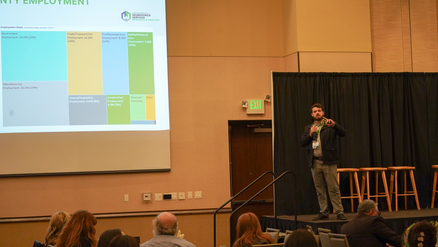 Despite the hurdles, Jeanfreau emphasized optimism for long-term employment opportunities, particularly in healthcare, technology, education and construction. He noted Utah is expected to maintain 2.1 percent annual job growth through 2032, with Cache County projected at 1.8 percent. The rise of AI and automation, he added, is likely to enhance productivity rather than replace jobs. “With AI, we are on the cusp of higher productivity,” Jeanfreau said.
Despite the hurdles, Jeanfreau emphasized optimism for long-term employment opportunities, particularly in healthcare, technology, education and construction. He noted Utah is expected to maintain 2.1 percent annual job growth through 2032, with Cache County projected at 1.8 percent. The rise of AI and automation, he added, is likely to enhance productivity rather than replace jobs. “With AI, we are on the cusp of higher productivity,” Jeanfreau said.
If you would like to learn more about Jeanfreau's presentation, use the link below to view his slides from the event.
Economic Forecast Slide Deck
Infrastructure and Community Development
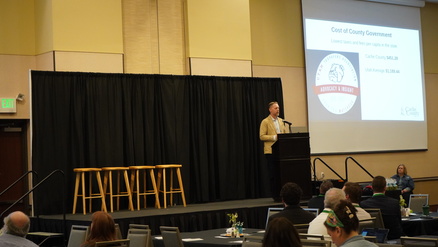
Zook addressed the region’s housing challenges, pointing to the growing need for dual-income households to afford homes. He encouraged residents to get involved with the county’s housing crisis task force.
While noting that Cache Valley’s agricultural sector contributes around $2 billion annually, Zook called for greater economic diversification. He emphasized the need for more indoor recreation spaces, especially following Logan City’s transfer of the Logan Recreation Center to the school district.
If you would like to learn more about Zook's presentation, use the link below to view his slides from the event.
State of Cache County Slide Deck
Innovation in Transportation
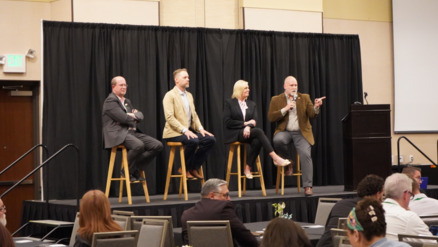
Bank of Utah’s Commitment to the Community

“We’re proud to support Cache Valley’s growth by partnering with local leaders and investing in the future,” said Cherie Hanson, SVP, Marketing and Communications at Bank of Utah.
Despite current headwinds, the summit made clear that Cache County’s economic resilience, institutional strength and spirit of collaboration position it well for continued growth and adaptation in the years ahead.
